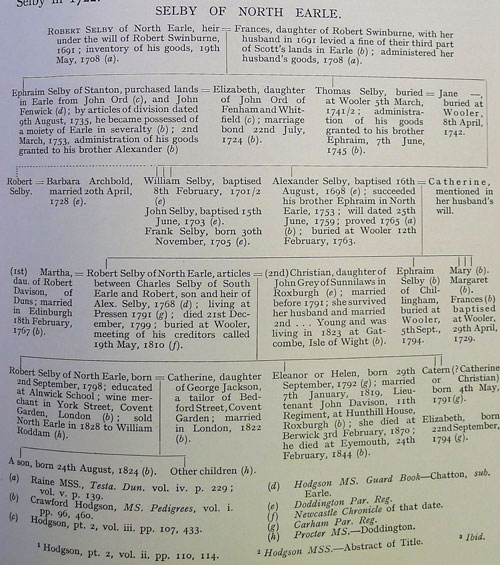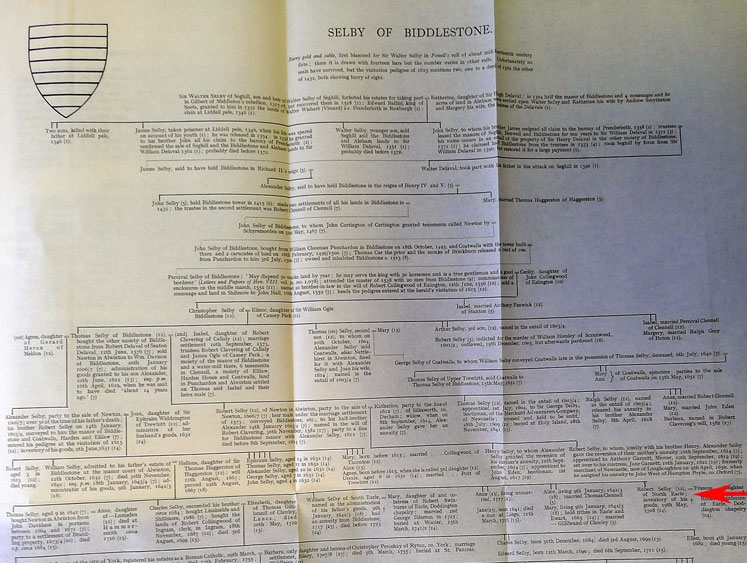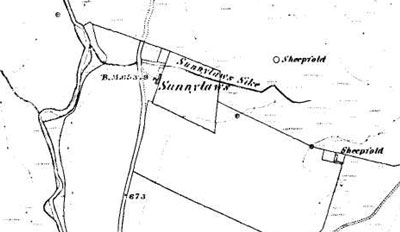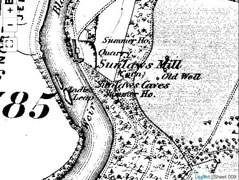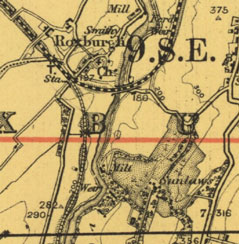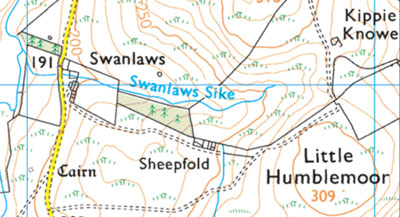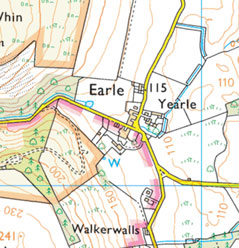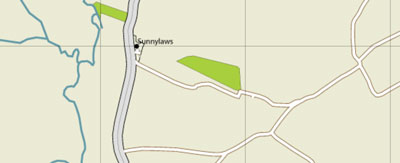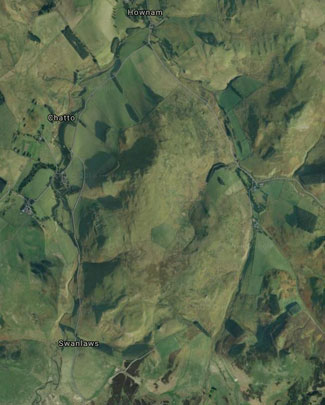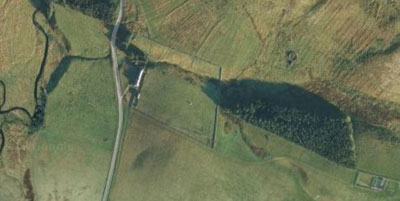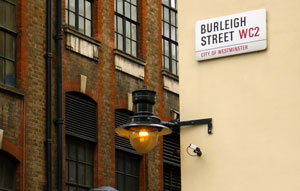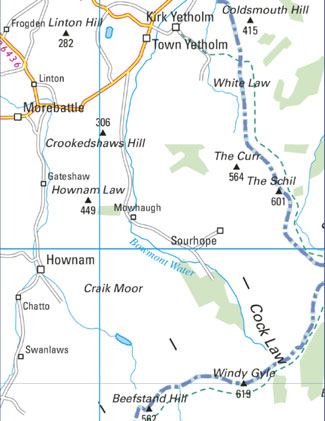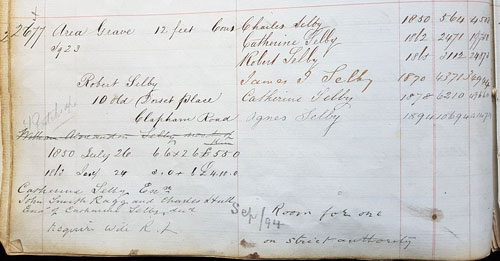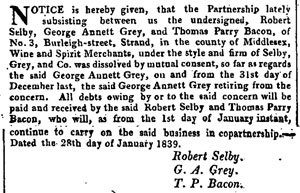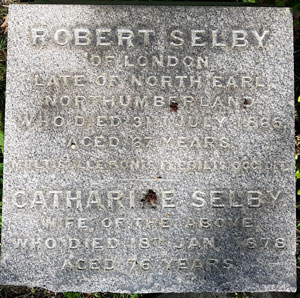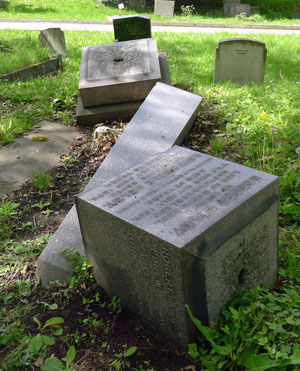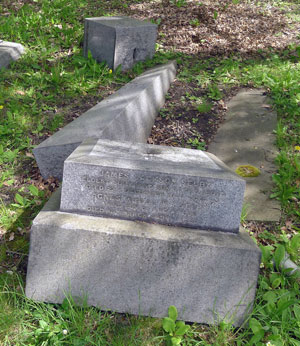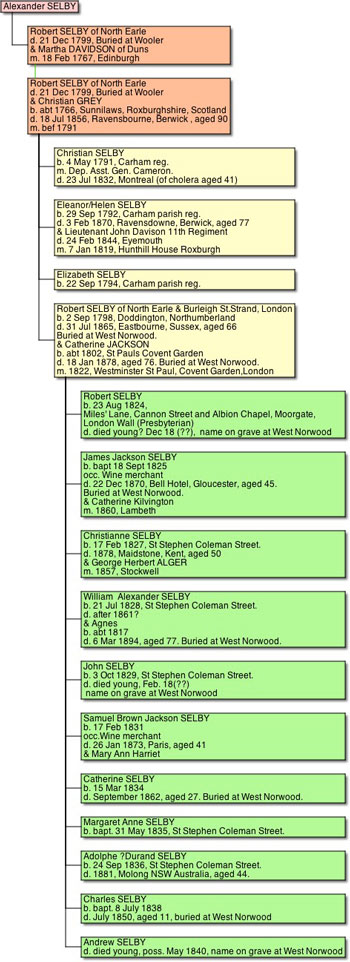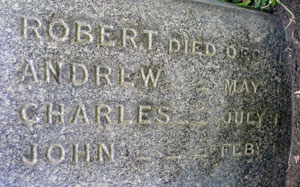Robert Selby, Wholesale Wine Merchant
Born 2 September 1798 Doddington
Died 31 July 1865 Eastbourne, Sussex.
Left: Selby of North Earle, a family tree from the History of Northumberland. Vol. XIII, p.175. North Earle was in the parish of Doddington. It is just south of Wooler. " A wood surrounded mansion house then on the right hand side of the road leading from Wooler to Langley Ford". Robert was the youngest child. His three older sisters were baptised at Carham.
Robert's father died when he was an infant and his mother remarried. His sister Eleanor or Helen, was married in 1819 at Hunthill House Roxburgh. (About 2 miles from Jedburgh.) His mother was Christian Grey, daughter of John Grey of Sunnilaws in Roxburgh. At the time of writing (2018) we have been unable to find out if she was a relative of the Milfield Grey family, although there appear to be a number of connections. North Earle was rented out to
William Grey in the 1830s. (William later emigrated to New Zealand) William's children were born at North Earle. Piggott's directory for 1834 has Mr William Gray at North Earle.
The Robert Selby of North Earle at the top of the North Earle chart can be found on the chart of the Selbys of Biddlestone, from the Northumberland Histories, (see red arrow). The Selbys can trace their ancestors back to Sir Walter Selby of Seghill in the 1300s. Robert had married Frances Swinburne who was the heiress of Earle.
Robert Selby took
George Annett Grey into partnership in the wine trade as Selby Grey & Co. George’s father John was writing to him at Selby’s address at 3 Burleigh Street, Covent Garden in April and August 1837 asking him to come north before Wooler fair: “ if you could be at Wooler fair on the 4th you could perhaps do some wine business”.
The Selbys are an old Northumberland family with many different branches. They are said to have moved from Selby in York up to Newcastle. They married into the Delaval family at Seaton and the Fenwick family at Wallington. As well as having a branch at North and South Earle, a branch of family descended from the Twizell Selbys lived at Paston and another at Cheswick Hall near Holy Island. Some claim to be descended from a Danish chief and others from a norman knight who come over with William the Conqueror.
Christian Grey was born about 1766. Robert Selby's marriage to Christian Grey in 1790 at Cornhill is recorded at both Coldstream and Cornhill. "Christian Grey, daughter of John Grey of Sunnilaws, Roxburgh". Where was Sunnilaws? An online history of Berwick refers to a
Mr Thomas Hubback, of Sunnilaws, Kelso. There is a Sunnylaws in Cornhill parish, but this is in Northumberland. There ia a Sunlaws Mill and Cave in Roxburgh, Scotland but also a Sunnylaws Farm in Roxburgh, south west of Yetholm.
Sunnylaws farm in Cornhill, Northumberland, England
Sunnylaws farm in Roxburgh, Scotland. OS map of Roxburgh 1863 sheet 028 british-history.ac.uk TD8 6
Sunlaws Mill and Sunlaws Caves south of Roxburgh.
On today's streetmap it appears as Swanlaws.
Although in close up the name Sunnylaws appears. It lies south of Chatto, Hownam and and Morebattle, south west of Town Yetholm and Kirk Yetholm. Fairly remote and on the Scottish side of the Cheviot Hills. Not near Kelso, so they may be another farm of the same name.
Of the 11 children that his wife Catherine bore, 4 of the boys died young and their names appear on one side of his grave although the last part of the date is below ground:
ROBERT, died Dec 18(??)
ANDREW May 18(??)
CHARLES July 18(50)
JOHN Feb 18(??)
Only Charles is recorded in the burial register. Their daughter Catherine died after Charles. Her name is on the other side of the stone (CAT)HERINE DIED SEP 1862.
Two of the sons James Jackson Selby and Samuel Brown Selby went into partnership as wine merchants themselves, at 124 Fenchurch Street, although Samuel had started life as a librarian. James Jackson Selby had lived at 24 Park Crescent Stockwell but died at the Bell Hotel in Gloucester. He was a wine merchant at 124 Fenchurch Street and left under £7,000 in his will. He had become a freemason at Erith lodge in 1867. His brother Samuel Brown Jackson who lived at 51 Clifton Road, St John’s Wood, had the same business address and left the same amount when he died in 1873. The W. A. Selby mentioned on the grave could be the William Alexander Selby found living at 124 Stockwell Park Road in 1861 married to an Agnes. He is a commercial clerk (unoccupied), but he was born in Woodcot, Surrey, his death has not yet been found. The William Alexander Selby who died in Lambeth in 1864, was aged 6 and the son of Robert Isaac Selby of 3, Crozier Street. An Adolph Selby can be found in New South Wales dying in 1881 at the age of 44. He bears the second name Durand, which seems to confirm that he is one of Robert’s sons.
Christian Grey's baptism has not been found, or her second marriage to Young. She died at Ravensbourne, Berwick in July 1856, at the age of 90.
Left: West Norwood burial register.
2677
Robert Selby, 10 Old Dorset Place,
Clapham Road.
William Alexander Selby next of kin
Charles Selby 1850
Catherine Selby 1862
Robert Selby 1865
James J. Selby 1870
Catherine Selby 1878
Agnes Selby 1894
George’s surviving letters describe a journey to Paris with Robert in October 1837. They travelled by steamer from Tower Stairs to Calais. They took a carriage that held 6 people by road to Paris, helping themselves to grapes when they had to get out to walk up the hills. In Paris they did some sightseeing. George was impressed by the cafes: [they] “are very splendid places being almost walled with mirrors and brilliantly lighted, which produces a very striking and fine effect.” In Paris they split up Selby going to Toulouse and George to Brussels to visit the scene of the battle of Waterloo.
In 1838, on the firm’s behalf, George embarked on a 5-month tour of Portugal, Spain and France with letters of introduction to various wine-exporting merchants. He sent letters back to Robert Selby about the wine trade. Selby imported French wine and knew the French merchant Durand who wanted answers to questions about Portuguese wine growing. He gave George a list of 28 questions to investigate about fortified wine, its production and transport costs. George travelled by coal fired steamer from Cornwall reaching Oporto on 14 January. He passed himself off as a coal owner to people he met who were connected to the wine trade. Arriving after the Portuguese civil war (1828 to 1834) a lot of the towns were in ruins with canon balls still embedded in trees and walls. He visited the different wine exporters: “spent the forenoon in Mr Sandeman’s stores which are the largest here containing 11.000 pipes” George wrote to Selby with as much detail as he could about the trade. : “The wine trade here in a very bad state, … the prices have fallen in England partly because many houses here have been so overstocked that they are obliged to sell at any price, there are 160.000 pipes at this time (before this year’s wines come in) in Porto, and last years shipments were 21.000, which would argue that they require 7 years to get off their present stock for the sales to other parts are nothing; last year 1,800 to America and 2,000 to Brazil, and they must sell, there is such a terrible want of money here, in consequence many houses will buy very smally of this years wine, so the demand being small, prices may likely be low; … with the growers having been badly paid for some years, and they are very poor; will cause them to throw part of the lands out of Vine growth; … the Merchants here are getting very small profits except a few who have a crack hand, and … expect several crashes before long among the English Houses “ On 7 February George travelled up the Douro riding on mules in roads knee deep in mud and sleeping in beds black with fleas. Arriving in Ragoa where the wine merchants had stores he went round the district gathering information. In two towns he saw men killed by knives who died in front of him, facts which he omitted from the letters he wrote to his mother. In February he gave Selby a detailed description of how the vines were grown. By 11 March he sailed to Cadiz with introductions to more wine exporters, he visited Seville, then sailed from Cadiz to Gibraltar in a terrible storm, arriving on 2 April. He visited Tetuan and rode to Tangiers. During the journey he observed “we were obliged to have a soldier from the governor to protect us or we should have been murdered, they think if they kill five Christians they become Saints and go to Heaven without further trouble” After returning to Gibraltar he sailed to Spain spending days examining the storehouses and wine, and making arrangements for shipping it to London. He travelled back through France in May visiting different estates and stores. He reached Marseilles by 9 May and travelled back through France by coach sailing back to Dover and reaching London on 13 June.
Robert moved to London and when he was 24 married Catherine, daughter of George Jackson, a tailor of Bedford Street, Covent Garden in 1822. Over the next 14 years she gave birth to at least 11 children, who were baptised in the Miles' Lane, Cannon Street and Albion Chapel, Moorgate. The family were non-conformist although another branch of Selbys at South Earle were Roman Catholic. In 1828 Robert sold North Earle to William Roddam. He appears to have a number of business interests as he applied for a patent for a folding canvas camp bed in 1832
At the end of that month the company had a number of creditors. In 1838 Selby wrote to George's father
John Grey of Dilston to ask him for £2,000 to bring in a Mr Bacon as a third partner into the business. This would appear to be an unusual move if there were not some business or family connection. It is not known if John agreed but by the end of the year George had left the partnership and returned to being a farmer and land agent.
Selby appears in directories for 1843 at 3, Burleigh Street, Covent Garden but by 1847 he was bankrupt only becoming solvent again in 1863, two years before his death. His family lived at Old Dorset Place in Kennington and can be found there on the 1841 and 1851 census. In 1850 his son Charles died and he bought the family grave plot in West Norwood Cemetery. By 1861 he lived at 2 Albert Square, Clapham Road and after that at 121 Kennington Park Road, where one of his visitors is vicomptes E. Belair a landed proprietor, born in Vosne, Burgundy. Selby died at Eastbourne in 1865. Probate records for 1867 show that he left under £4,000 although they were resworn in March 1879 at under £6,000
Robert’s grave transcription reads:
ROBERT SELBY
OF LONDON
LATE OF NORTH EARL
NORTHUMBERLAND
WHO DIED 31 JULY 1865
AGED 67 YEARS
MULTIS ILLE BONIS FLEBILIS OOCIDIT * CATHERINE SELBY
WIFE OF THE ABOVE
WHO DIED 18 JANUARY 1878
AGED 76 YEARS
*(He fell lamented by many good men) a quote from Horace
On front kerb:
JAMES JACKSON SELBY
ELDEST SURVIVING SON OF THE ABOVE
DIED 22 DECEMBER 1870 AGED 45
AGNES WIFE OF W A SELBY
THIRD SON OF THE ABOVE
DIED 6TH MARCH 1894 AGED 77.
The Selby family grave was discovered recently and has collapsed. It is hoped that it can be reassembled as all the parts are still there.
The 28th of July last, at Montreal, Canada, Christian, the wife of Deputy- Assistant Commissary-General Cameron, and youngest daughter of the late Robert Selby, Esq. of North Earl, Northumberland. Newcastle Chronicle 15 Sept 1832.
The Border Magazine, October 1832, Vol. II, No XII, p. 192
At Ravensdowne, Berwick, on the 3rd inst., Eleanor, widow of the late Lieutenant Davison, 11th Regiment, and sister of the late Robert Selby, of London, formerly of North Earl. Berwickshire News 8 Feb 1870
The death of Robert Selby's mother: - At Ravensbourne, Berwick- on -Tweed, on 18th inst., Mrs Young, aged 90, relict of Mr D. Young, and formerly widow of Robert Selby, Esq., of North Earl, Northumberland.
25 July 1856 Dundee, Perth & Cupar Advertiser.
Christian Young nee Grey, Robert Selby Srs wife, was living with her daughter Helen Davison in Ravensdowne, Berwick on Tweed in 1851 and can be found on the census there, aged 86, born in Scotland. Ravensdowne was possibly a property of the South Earle Selbys. A news article on the Selby family reports: "Mr Thomas Selby died in 1846, and was succeeded ... by his eldest son, Charles Selby Esq., J.P. and D.I., for the county of Northumberland. This gentleman, when in his thirty- third year, married Margaret, daughter of the late William Willoughby, Esq., solicitor of Ravensdowne House, Berwick-upon- Tweed but this lady died without bringing him any children."
The death of Robert Selby's father: - lately at Earle, Northumberland, Robert Selby, Esq. Newcastle Courant, Saturday 8 February 1800
Christian Young's death certificate records that she was 89. The 'widow of David Young, Farmer'. The cause of death was 'accidental fall, jaundice 2 months'. Her daughter Helen Davison was 'present at the death'.

